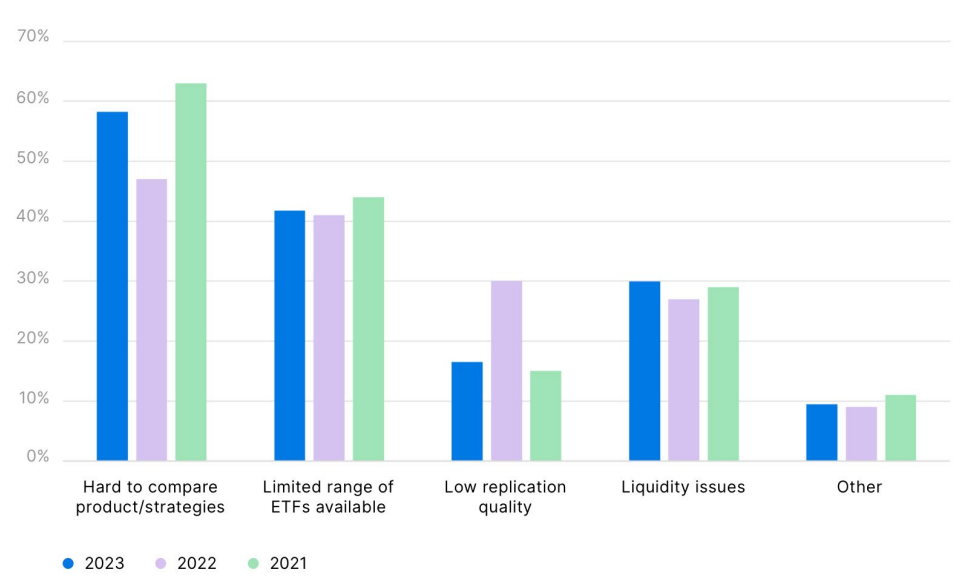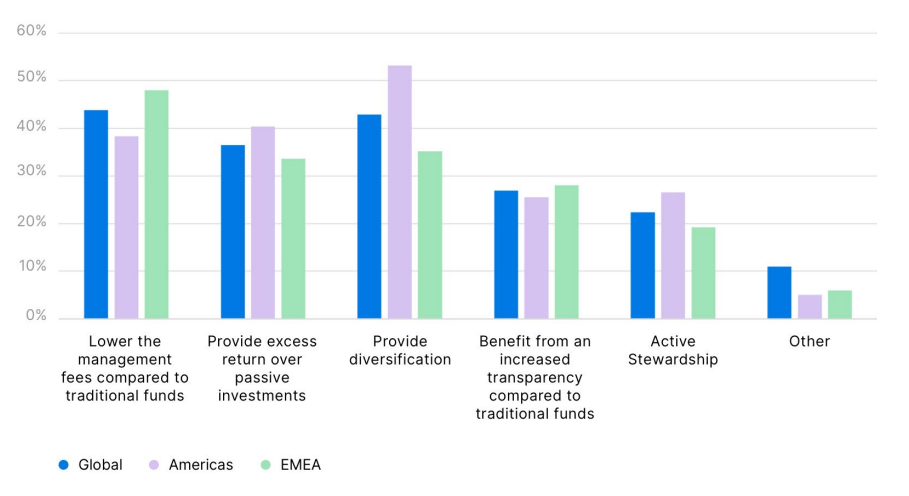A large number of small-sized fixed income ETFs in Europe is making it difficult for investors to select the right product, a new survey has found.
According to Trackinsight’s Global ETF Survey 2023 – which interviewed 549 investors globally with $900bn ETF assets under management (AUM) – almost 60% said the inability to compare products was the main challenge of investing in bond ETFs in Europe.
It found that while investors in the Americas also faced “ongoing struggles” in choosing the right strategy, the problem was much more acute in Europe where the number of products is higher.
Highlighting this, there are currently 1,022 bond ETFs in Europe versus 847 in North America, according to data from TrackInsight.
“For the third year in a row, investors cited ‘comparing products’ as the main challenge when investing in fixed income ETFs. This is especially true in Europe, where the number of products is larger than in the Americas,” the report said.
“A large number of small-sized AUM funds in the EU in particular makes it more difficult for investors to pick funds.”
Chart 1: Main challenges of investing in fixed income ETFs

Source: Trackinsight
Fixed income has experienced a renaissance in 2023 as the asset class continues to boost allocations at attractive yields and a marked turnaround from 2022 where skyrocketing inflation created a challenging environment for the asset class.
Despite this, investors said the second biggest challenge was the limited range of bond ETFs available (42%), followed by liquidity issues (30%).
Investors were more cautious about whether they would use fixed income ETFs to invest in less liquid bond securities, with half stating they would, down from 63% in 2022.
“Recent events in the banking industry in early 2023 are likely to have influenced this change in opinion. Depreciation of some bonds to lower quality – and even erased value within the EU CoCo bond market – has caught investors off-guard,” the report said.
CoCo bond ETFs posted double-digit losses in March with the Invesco AT1 Capital Bond UCITS ETF (AT1) falling 12.9% in one session. However, investors saw this as a buying opportunity with AT1 recording $110m inflows in the two months since.
Elsewhere, fixed income ESG ETFs remain in demand, with 66% of respondents stating they believe it is a good way to invest sustainably.
“A greater number of offerings means that investors can now choose the fixed income products that align with their specific goals,” the report said. “Moreover, as transparency improves, investors can also better identify ETFs that go further on sustainability goals.”
Investors are expected to increase allocation towards thematic and actively-managed ETFs over other strategies within the next two to three years.
In Europe, active ETF demand is driven by lower management fees compared to traditional funds as well as the diversification and opportunity for excess returns over passive funds.
Chart 2: Main motivations for investing in actively-managed ETFs

Source: Trackinsight
Diversification was also a driver for thematic ETF investing, alongside high conviction and making a long-term strategic bet. However, the latter has dropped off significantly since 2021 due to choppy performance.
“With poor market performance and a high correlation between asset classes in 2022, investors have revised their approach to mitigate risk instead,” the report said.



